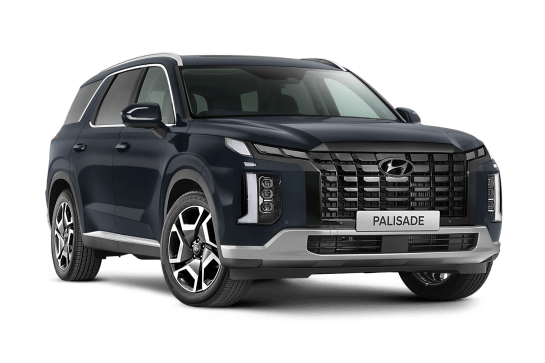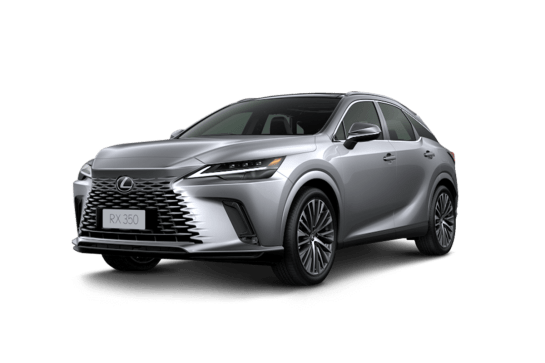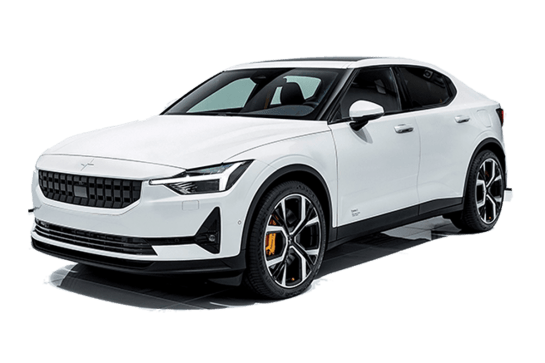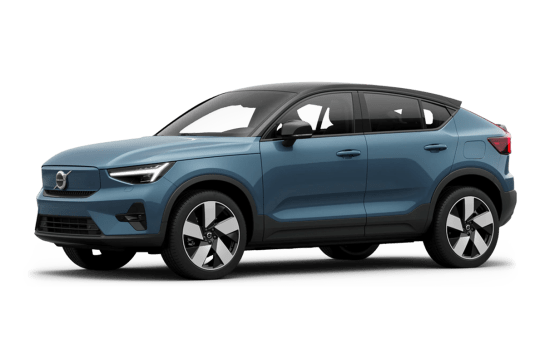
Audi Q5 VS Lexus NX250
Audi Q5
Likes
- Sprightly performance
- Still a dynamic winner
- Spacious, well-crafted interior
Dislikes
- Loses cargo space over petrol models
- Cabin starting to date
- Driving range can’t match Lexus
Lexus NX250
Likes
- Affordability and equipment
- Elegant outside, luxurious inside
- Hugely quieter and more refined than before
Dislikes
- Driver-assist tech could use some Aussie road tuning
- Hard to tell apart from previous design
- NX 250 engine needs the open road to truly shine
Summary
Audi Q5
Audi has had a mixed history with plug-in hybrids (PHEV) in Australia. Under its ‘e-tron’ banner it has launched PHEV versions of the previous A3 hatch, and the Q7 SUV, with limited success.
But the German marque believes the time is right to add plug-in power to one of its most popular models - the Q5 mid-size SUV.
With decent driving range and a packed standard features list, Audi is not messing around. But how does it stack up value wise against the already popular BMW X3 and Volvo XC60 PHEVs?
| Safety rating | — |
|---|---|
| Engine Type | — |
| Fuel Type | Electric Hybrid |
| Fuel Efficiency | —L/100km |
| Seating | 5 seats |
Lexus NX250
As far as clichés go, attempting to make “a silk purse from a sow’s ear” couldn’t be more apt than when contemplating the original NX of 2014.
What was essentially the Lexus-fication of the vocal, fidgety and thirsty old Toyota RAV4 may have worked a treat sales-wise, but proved trickier when assessed against the lens of a BMW X3, Audi Q5 and Volvo XC60 rival.
The earliest NX just wasn’t refined enough.
Read more about
This was especially true following the reborn RAV4 arrival in 2019, proving to be embarrassingly more competent – even compared to most luxury midsized SUV alternatives.
Now, finally, the NX redesign has followed suit, moving on to a variation of the Toyota’s stronger, quieter and more advanced TNGA architecture (dubbed GA-K) as a starting base.
Speaking of which, let’s dive straight into the least-expensive version, the NX 250 Luxury 2WD auto, to find out if the most popular Lexus model in Australia has finally found its mojo.
| Safety rating | |
|---|---|
| Engine Type | 2.5L |
| Fuel Type | Premium Unleaded Petrol |
| Fuel Efficiency | 6.9L/100km |
| Seating | 5 seats |
Verdict
Audi Q57.9/10
It might be a late return to the PHEV game for Audi, but it’s an impressive one. Everything great about the Q5 remains - dynamically engaging, responsive powertrain - but you get the added benefit of electric power.
This could be the car to prove that plug-in hybrid medium SUVs don’t have to be bland family transport. If the Q5 is anything to go by, going green can be downright fun!
Note: CarsGuide attended this event as a guest of the manufacturer, with travel, accommodation and meals provided.
Lexus NX2509/10
So, is the cheapest Lexus NX the grade you’d skip? Depends on where you live and drive.
If you’re urban based and bound, save up a bit more and go the petrol-electric hybrid; otherwise, out on country roads especially, the spirited and sporty NX 250 is more than up to the task.
Either way, though, the latest NX is finally fit to fight the other premium brands’ medium SUV efforts, head on and held up high. Welcome to big mid league, Lexus.
Ignore or underestimate at your own peril, everybody else.
Design
Audi Q5
The second-generation Q5 has been around for six years, and it was very much an evolution of the original, but it still looks attractive in the metal. You couldn’t call it edgy, but it is handsome.
Both PHEV body styles get the S line exterior package as standard, which adds a unique honeycomb grille, S line bumpers front and rear, Audi Sport wheels and it borrows the rear spoiler from the SQ5.
While many will favour the swoopy Sportback body style, I think the Q5 is at its most arresting in SUV body style, bathed in the gorgeous 'District Green Metallic' paint. Stunning.
Inside, only the Sportback gains the S line interior, which includes a leather three-spoke steering wheel with multifunction, shift paddles and hands-on detection, Nappa leather upholstery with contrast stitching, and aluminium inlays. The SUV seats are leather-appointed.
It’s fair to say Audi’s interiors have modernised since the launch of this Q5 in 2017, but it’s still hard to fault. The multimedia screen jutting out the top of the dash is a little old school these days, but the materials and quality are top notch.
Lexus NX250
Lexus says that nearly one million of the original-shape NX versions were produced, so there’s no way that the brand was going to mess with the styling of the latest version. Which explains why picking new from old is a serious case of trainspotting.
But that migration to the TNGA GA-K platform has brought some benefits from a design point of view. The styling now breathes more, especially when viewed rear-on, thanks to a body that’s 20mm longer and wider, as well as a handy 30mm wheelbase stretch.
Drilling into the details, the headlights have an LED ‘tick’ motif, the corporate ‘spindle’ grille isn’t as in your face and the rear gains ‘LEXUS’ lettering spelled out, probably to accentuate stance.
Crisp and elegant, the design works well. This is a handsome machine. Looks expensive too.
Practicality
Audi Q5
As - predominantly - a family hauler, the Q5 has always done well in the practicality stakes. And adding a plug-in hybrid powertrain hasn’t changed that. Although you do lose some boot space compared with the petrol models - but more on that in a bit.
Up front, the Q5 has plenty of nooks and storage slots in the console, including a longer shallow slot to hold phones. The central bin is deep enough and the door bins can swallow big bottles and more. Housing the phone charger on the top of another storage spot in the console works as it can be hidden by the larger storage lid for security.
As the Q5 is older than some of Audi’s fresher models, there are physical buttons for things like air conditioning, seat heaters, and controls for drive modes and other vehicle functions.
It might not look as schmick as having a screen to house everything, but from a practicality and safety perspective, it’s welcome.
This approach also extends to the multimedia system which is fairly simple to navigate with a logical menu. Audi’s system gets a tick, as does the digital cockpit - something the brand pioneered.
While the leather appointed seats in the SUV are nice, the quilted Nappa leather seats in the Sportback are much more luxurious. And the ‘Rotor Grey’ colour scheme is simply beautiful. They offer more than enough support in the front row and they are comfy without being super plush.
There’s ample leg and headroom in the front row.
That is the same for the second row. So much headroom even with a panoramic sunroof. And behind my 183cm (six foot) driving position, there was room to spare in front of my knees. It’s such a good size.
Also, the rear seats have some bucketing so passengers will feel a little spoiled. There’s also knee-level air vents, map pockets, two USBs and a 12-volt port, a fold-down armrest with cupholders and ISOFIX points on the outboard seats.
The rear row folds 60/40 and there’s decent room in the boot, which has a power operated tailgate.
Given some of the PHEV hardware sits directly under the boot floor, it’s little surprise that the SUV version (465 litres) loses 55L of space compared with the petrol-powered 45 TFSI.
Similarly, the Sportback (455L) drops by 45L. Also, despite the swoopy roofline, the Sportback only loses 10L of cargo space compared with the more practical looking SUV.
Those PHEV bits also mean there is no spare wheel - only a tyre repair kit.
Lexus NX250
Though distinctively attractive and obviously well built, the previous NX was quite small for a medium-sized SUV inside, with tight rear legroom.
It also had a nonsense mouse-operated multimedia controller that was fiddly, annoying and counter-intuitive to use.
Thankfully, the new-from-the-ground-up design has rectified both these issues in the latest version.
Now the NX is properly medium-sized, and so easier to get in and out of, as well as palpably roomier front and rear. Employing the RAV4’s TNGA architecture results in a lower and roomier cabin, that benefits all in terms of packaging.
Being the entry-level 250, you might not expect much in terms of interior presentation or style, but Lexus Australia’s product planners have been deft in specifying this grade to make it look luxurious and on-brand.
Body-hugging bolstered perforated leather front bucket seats, in our example finished in a black/cream hue with orange stitching, belie the base-grade reality of the 250. This scheme is also found on the centre console, armrest and door cards, lifting the ambience no end. It looks, feels and smells expensive in here.
The only thing that seems to be missing is a smartphone charger. That's part of a $3K option pack that also throws in a sunroof and foot-operated actuation for the electric tailgate. Not bad.
Then there’s the driving position, with an electrically-operated reach/height adjustable steering column and a multi-configurable seat to help find the right spot. All-round vision is also better than you might expect, no doubt helped out by huge exterior mirrors and a large reversing camera screen.
Typical Lexus-style classy digital instrumentation, directly ahead, are positioned in such a way that you’re not really aware of/missing the available head-up display in higher grades. Though it takes a quick amount of familiarisation, all the info there is ultimately clear and easy to take in.
The same applies to the now touch-only centre screen, which has a slick rich finish and tactility, and also encompasses the climate-control display.
Along with banishing the dreaded mouse pad, kudos to Lexus for also installing physical switches or buttons for the most-used items – audio volume, temperature setting, and front and rear window demisting.
These and the simplified sub-screen menus for navigation, wireless telephony/audio streaming, vehicle diagnoses and vehicle settings amongst other features, is quickly second-nature in their accessibility and operation. And the sound system quality is great too.
One of our very few complaints concerns the Apple CarPlay experience, which seems needlessly complicated to return to if you temporarily switch away from it to the NX’s native multimedia system. Confusing and distracting.
Never mind. There are minivan levels of practicality at work here, from the superb and easily manipulated ventilation system to the seemingly endless storage options, that include bottle holder capability in the doors, a clever lid operation for the huge centre console and properly engineered cupholders.
Lovely lush materials of satisfying quality are further plus points.
We’re also fans of the NX’s electric door opening system with a failsafe handle, meaning you can grasp the door handle inside or out and a solenoid activated by a press in of a thumb releases the door quickly and naturally in a single action; it feels… upmarket and ergonomic once accustomed to.
Accessing the back seat is easy due to the latest model’s larger proportions. Much of the same applies out back as the front seat area in terms of quality of finish and attention to detail. Sculptured and enveloping backrests (adjustable for two reclining positions), a well-padded cushion and more-than-sufficient space for two burly adults or three smaller people means this NX is more family friendly than the swoopy exterior styling suggests.
We’re also happy to find large people-facing air vents, two USB and a 12V outlets, one-touch electric windows with that premium-car soft close mechanism, overhead LED lights, grab handles, centre armrest with cupholders, map storage behind both front seats, coat hooks and good lines of vision further enhance the appealing and comfortable back seat environment. It feels like a Lexus should.
Further back than that, after releasing the electric tailgate via either an interior button or exterior switch, you’ll find that the boot has a fairly high loading lip, but then offsets this with a long, flat floor with matching levels of appropriate-quality finishes. Another 12V plug and two bag hooks are included, along with ample lighting and tie-down hooks. There’s also a hidden deep storage compartment underneath the floor, due to the discontinuation of a spare wheel (due to runflat tyres, remember).
Capacity is rated at a fairly ordinary 520 litres, extending to 1411L with the split/fold backrests folded. You’d expect a remote actuation for the latter like Mazda wagons have had for decades, but none is found at this price point.
Note there is no solid cargo cover either, just a flexible/flimsy fabric item that’s foldable and easily stored.
Overall, though, despite of its base positioning within the NX hierarchy, the 250's interior experience is in keeping with the brand's image.
Price and features
Audi Q5
Dipping its toe back in the plug-in hybrid market, Audi is keen to appeal to buyers looking to reduce their carbon footprint, but also to driving enthusiasts requiring a bit of zing with their environmental credentials.
That’s where the Q5 55 TFSI e quattro comes in. Audi Australia had the option of introducing a less performance focused Q5 PHEV grade, but opted instead for the higher output model.
Audi sees this as the SQ5 you buy when you want to save the planet. And the 0-100km/h sprint time of 5.3 seconds suggests it’s pretty close.
Pricing for the 55 TFSI e quattro starts at $102,900, before on-road costs, for the SUV body style.
Opting for the Sportback carries a $7300 premium, making the price $110,200. But you get some more gear in the Sportback over the SUV, including the S-line interior package, and Matrix LED headlights with dynamic front and rear indicators.
Other equipment standard on both grades includes a panoramic sunroof, hands-free power tailgate, ambient lighting (with 30 colours), keyless entry and start, front leather-appointed seats with heating and power adjustment, three-zone climate control, a 10.1-inch multimedia touchscreen with wireless Apple CarPlay and Android Auto, digital radio, 10-speaker audio, auto-dimming interior mirror and 20-inch Audi Sport alloy wheels.
You can opt for different 20-inch wheels or 21-inch hoops as well.
The 'Technik' option pack costs $4900 for the SUV and $4700 for the Sportback and adds a head-up display, a more premium Bang & Olufsen audio system, and high-tech head or tail-lights, depending on the body style.
All in all it’s a healthy standard features list. I’ve said it before recently, but it’s worth repeating - it’s good to see premium brands including more standard features in their models, rather than making everything an option.
That said, maybe heated rear seats (as well as the standard front seats) might have been a nice addition.
So, how does the Q5 compare with its PHEV counterparts? Its most obvious rival is the BMW X3 xDrive30e which is more expensive at $111,800.
Then there’s the Range Rover Evoque R Dynamic HSE ($104,310) and Volvo XC60 Recharge ($101,990), which line up closely with the Audi, while the Lexus NX450h+ undercuts them all ($91,423).
Lexus NX250
Priced from $60,800 (all prices are before on-road costs), NX 250 Luxury equipment levels are – in a word – generous for an entry-level proposition. In fact, we thought our test vehicle arrived jam-packed with options, but what’s in the photos is standard fare.
There’s no scrimping on safety, for example, with eight airbags, autonomous emergency braking (AEB), front and rear cross-traffic alert, blind-spot monitor, lane-keep and steering assist, adaptive cruise control, LED lights with auto high beams and Safe Exit Assist – which won’t allow doors to open if vehicles or cyclists are whizzing by and in danger of being struck. Clever.
The NX 250 also scores keyless entry/start, a 9.8-inch touchscreen featuring ‘Hey, Lexus’ voice control, sat-nav, Apple CarPlay/Android Auto, digital radio, powered steering column adjustability, electric front seats with heating, dual-zone climate control, a powered tailgate and 18-inch alloys running on 235/50 runflat tyres (so no spare wheels whatsoever).
About the only thing we’d like is a smartphone charger, though that’s available as part of a $3000 Enhancement Pack 1, which also throws in a sunroof and kick-sensor activation for that powered tailgate. All for under $64K. Job done.
This is provocative pricing. A base Genesis GV70 RWD starts at $68,500, a Q5 35 TDI diesel FWD costs from $68,350 or nearly $73,000 for the quattro petrol AWD – as does XC60 Plus B5 AWD, an X3 sDrive20i RWD is $76,600 and a GLC 200 RWD is now from $77,305.
Even with the Lexus’ EP1 box ticked, they make the NX 250 seem like conspicuously good value for money.
You’ll find luxuries like leather, adaptive headlights, instrumentation head-up display, a larger touchscreen, vented seats, surround-view camera, premium audio and 235/50 R20-sheathed 20-inch alloys in the bestselling 350h hybrid grade, in either swishier Sports Luxury or racier F Sport grades; both begin at $73,100, AWD adds $4800 and another (rear-sited) electric motor, while that price also covers the rapid and non-hybrid 350 Turbo AWD F Sport.
The flagship NX is the 450h+ F Sport AWD plug-in hybrid electric vehicle (PHEV) from $89,900. The company’s (and Toyota’s) first such tech for Australia.
All NXs include Lexus’ ‘Encore’ aftersales subscription program offering myriad offers and services including “free” car rental.
Under the bonnet
Audi Q5
The Q5 pairs a 2.0-litre four-cylinder turbo-petrol engine - found in many VW Group products - with a plug-in hybrid set-up that includes a lithium-ion battery pack and an electric motor.
The total system output is 270kW of power and 500Nm of torque, which is impressive. In fact, it has more power - but a little less torque - than the SQ5 performance flagship.
It drives all four wheels thanks to Audi’s quattro all-wheel drive system, and does that via a seven-speed dual-clutch automatic.
Lexus NX250
There are two ways of looking at this.
Yes, the NX 250 is powered by a variation of the same engine found in the humble base Camry Ascent in Australia at almost half the price. On the other hand, it’s a Toyota powertrain and everything that’s good and reliable and dependable about that. Which is not always the case with premium SUVs.
Dubbed Dynamic Force, which may imply forced-induction like a turbo or supercharger but there isn’t any, the 2487cc 2.5-litre naturally aspirated direct-injection D-4S twin-cam four-cylinder engine delivers 152kW of power at 6600rpm and 243Nm of torque at between 4000rpm to 5000rpm.
Drive is sent to the front wheels only, via an eight-speed torque-converter automatic. Tipping the scales at a pretty hefty 1705kg, it’s nonetheless the lightest NX, and manages a power-to-weight ratio of 89.1kW per tonne. That’s about the same as a GLC 200, which uses a 2.0-litre turbo petrol engine.
Efficiency
Audi Q5
The PHEV’s battery capacity is 17.9kWh and that ensures the Q5 has an electric driving range of up to 55 kilometres on the WLTP protocol.
Audi says the average daily commute of an Australian is 35km, so technically many people could get to work and back using electric power only.
It might not sound like a huge amount, but it’s more than the 41km offered by the BMW X3, although it doesn’t come near the Lexus NX’s 87km claim.
Energy consumption is rated at 23.9kWh/100km, and the official fuel consumption figure for the Q5 is 2.0 litres per 100km - bettering the X3’s 3.2L/100km figure but not as frugal as the Lexus (1.3L).
It has a 54-litre fuel tank and emits 45 grams per kilometre of CO2.
The Q5 PHEV has a Type 2 plug and comes with a charger to add more juice at home.
It has an AC charging capacity of 7.2kW and it will take two and a half hours to fully charge using a home wallbox charger. You can also plug it into a regular wall socket at home and it’ll be charged up in about eight hours, or overnight. It's not capable of DC charging.
Lexus NX250
Rated Euro6b, the NX 250 demands 95 RON premium unleaded petrol. Same as Camry, actually,
We recorded a decent 9.7 litres per 100km during our time using the NX 250 in city, urban and rural conditions, against the trip computer’s 9.5L/100km and the official combined average of just 6.9L/100km.
Note this may be so because there was a lot of fast back-road driving, as the engine loves a rev and there’s a palpable wave of power that comes on strongly between 5000rpm and 6500rpm. A bit like Mazda’s naturally-aspirated units, but just not as sonorous.
At 55 litres, the fuel tank will allow for up to 797km based on the combined average cycle between refills.
Driving
Audi Q5
The Q5 has always been the driver’s pick among its peers - specifically the BMW X3 and Mercedes-Benz GLC. You could argue a Porsche Macan is more engaging and you’d probably be right. But of those immediate German rivals, the Q5 takes the cake.
Adding a PHEV powertrain and the circa-300kg of extra weight that brings should impact dynamics - but somehow, it doesn’t.
First of all, the Q5 PHEV can do the 0-100km/h dash in just 5.3 seconds which is hot hatch territory.
But the really impressive thing about this Q5 is how well it handles, despite that extra weight. The battery pack is housed under the boot floor, and Audi engineers have done a bang up job in ensuring it retains that dynamic prowess it's known for.
We drove on some delightfully twisty roads in the Gold Coast hinterland for this launch event, and the Q5 didn’t miss a beat.
It maintained composure when pushed into tight corners, and had plenty of grip. And the electric urge coming out of those corners - providing you have battery charge left - only helps the experience.
Typically sharp Audi steering is indeed present and welcome.
Riding on 20-inch Audi Sport alloy wheels, and with a sporty bent, you’d think the ride quality would be impacted. But that was another pleasant surprise.
The Q5 soaks up corrugations with the standard suspension set-up, and the tyres have a decent sidewall. So no unpleasant sharp bumps detected.
The cabin is reasonably well insulated from most outside intrusion as well.
Lexus NX250
The NX 250 truly is a tale of two cars.
Around town, it is utterly capable and benign. The 2.5-litre atmo four-pot petrol unit is a revvy, raucous sort of engine, pulling away strongly off the line, responding quickly to pressing down on the throttle, shuffling up through seven of the lower gears smoothly (top is a highway overdrive), and generally being an easy vehicle to drive.
About the only concern is how noisy the engine can become if you’re needing to accelerate hard, with a definite mechanical zing that gives the Lexus a bit of a hoon attitude. We’re also a little hesitant about using the Sport mode in built-up areas, as ratios are held on to whether up or down shifting, amplifying the loud nature of this powertrain.
Other aspects of the NX 250’s driveability around town rate highly: light yet linear steering, with a tight turning circle providing easy manoeuvrability and parking; firm yet still absorbent suspension, offering an appropriately isolating ride over most bad road surfaces; and an overall sense of sound engineering. It seems quieter than an equivalent RAV4, more importantly.
Which led us to initially conclude that, in an urban environment, you’d naturally pay the extra $3K for the NX 250 Hybrid, to eliminate that noisy engine when pushing down hard on the throttle. Easy.
However, then we ventured out on a long rural drive, a few couple of hundred kilometres from the big city. On country roads, the NX 250 really sparks up in a most compelling way.
Yes, the engine is still a bit rowdy, but as the revs rise and the needle edges near the 6800rpm red line, the Lexus just keeps on building up speed rapidly, providing an unexpectedly sporty edge. Above 5000rpm this thing still has plenty of oomph, relying on a deep well of power to really extend its legs.
It also makes sense to slot the auto lever into manual, and use the finely positioned paddle shifters. That’s when you’re most aware of the gearbox being a torque-converter auto, with defined and assertive selections. It’s a good way to feel involved in the experience too.
Actually, as a mechanical ensemble, it all comes together at speed; that light and easy steering remains relaxed yet reactive, weighing up nicely if you choose Sport. The handling maintains a fluid, connected feel, with ample levels of grip from the Bridgestone tyres.
It occurred to us that driving the NX 250 Hybrid out on rural backroads would deny the enthusiast of the base model’s lightness and agility, since the latter weighs hundreds of kilos less; the brakes are perfectly modulated instead of feeling vaguely mushy and/or trigger happy as with many electrified SUVs; and – even with the road noise being well-supressed – you’re far less aware that the atmo petrol engine is singing loudly at speed.
Plus, the ride out in the sticks, even on our craggy old test strip that would jar the bones of some other midsized SUVs, remains calm and comfortably firm. That’s real progress for the NX.
We’d appreciate a bit more nuance in the way the stability control kicks in (quite late) to catch the tail; while the driver-assist tech like the adaptive cruise control and lane-keep assist do their jobs admirably, the latter’s constant chiming can be annoying; and there's a fair amount of road-noise intrusion over coarse bitumen. Like most midsized luxury SUVs, actually. Still quieter than a RAV4, though.
No jarring faults then. Lexus has done its homework and fixed most of the things that annoyed or infuriated us about the previous generation version. Good work.
Safety
Audi Q5
The Q5 plug-in counts an impressive level of safety gear, including eight airbags in total, although that does not include a front centre airbag.
It comes with the usual suite of driver aids, including Audi’s ‘pre-sense city’ system that activates emergency braking at speeds up to 85km/h, ‘pre-sense front’ emergency braking up to the Q5’s maximum speed, as well as attention assist, an active bonnet, a tyre pressure monitor, and hill descent control.
It also features adaptive cruise control, lane keep assist, blind spot monitor, safe exit assist, cross traffic alert and a 360-degree camera with an excellent display.
While the rest of the Q5 range is covered by a five-star ANCAP safety rating dating back to 2017, the Q5 plug-in hybrid remains unrated for now.
Lexus NX250
Tested in July, 2022, the latest NX range delivers a five-star ANCAP crash-test rating. It managed high scores in all four categories: Adult, Child and Vulnerable Road User protections, and Safety Assist technologies.
You’ll find eight airbags (providing coverage to all outboard occupants, also taking in dual-front occupant knees and centre item to stop lateral head strikes).
The AEB system with intersection assist works between 5-80km/h for pedestrian and cyclist detection and works day and night, while the car-to-car protection works between 5-180km/h.
Then there’s lane-tracing, lane-keep and steering assist, that works between 50-200km/h, as well as blind-spot monitoring, adaptive cruise control with stop/go functionality, auto high beams, road sign recognition, front as well as rear cross-traffic alert, reverse parking cameras, all-round parking sensors, tyre pressure monitors and Safe Exit Assist – which won’t allow doors to open if passing cyclists or pedestrians are in danger of being struck.
There’s also Intersection Turn Assist, providing early brake activation if required, Emergency Steering Assist (extra steering assistance to help keep the vehicle in its lane) and Emergency Driving Stop System.
As with most new vehicles nowadays, anti-lock brakes with brake-assist and electronic brake-force distribution is also standard, along with stability and traction control systems. Lexus provides three rear-seat child-seat tether anchorages and two ISOFIX latches, fitted to the outboard positions of the back bench.
Ownership
Audi Q5
The Q5 comes with Audi’s five-year/unlimited kilometre warranty. This was an increase on its previous term that Audi announced at the start of 2022. The PHEV is also covered by an eight-year/160,00km battery warranty.
Service intervals are every 12 months or 15,000km, whichever comes first, and Audi offers a capped-price service plan for five years that costs about $3500 all up. That’s a little pricer than BMW and Volvo’s plan.
Lexus NX250
Since the beginning of 2021, Lexus offers a five-year, unlimited kilometre warranty with roadside assistance. It used to be four years.
Service intervals are at 12 months or 15,000km, whichever comes first.
The NX also includes three years and 45,000km of capped-price servicing, with each one costing $495 – and as we’ve noticed in the recent past, that is very highly competitive pricing for a luxury brand.
Plus, there’s also Lexus’ ‘Encore’ aftersales subscription program offering myriad offers and services.






































